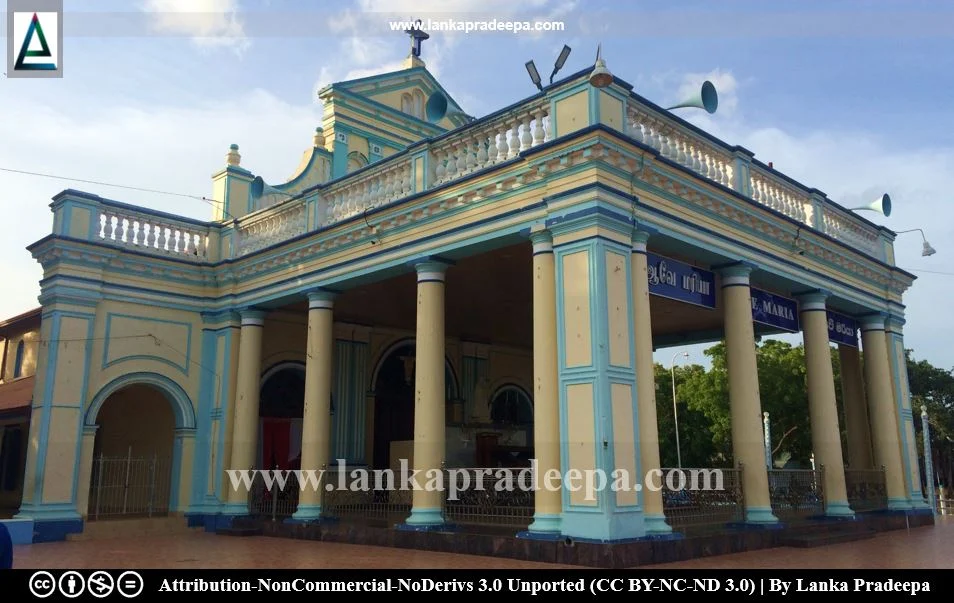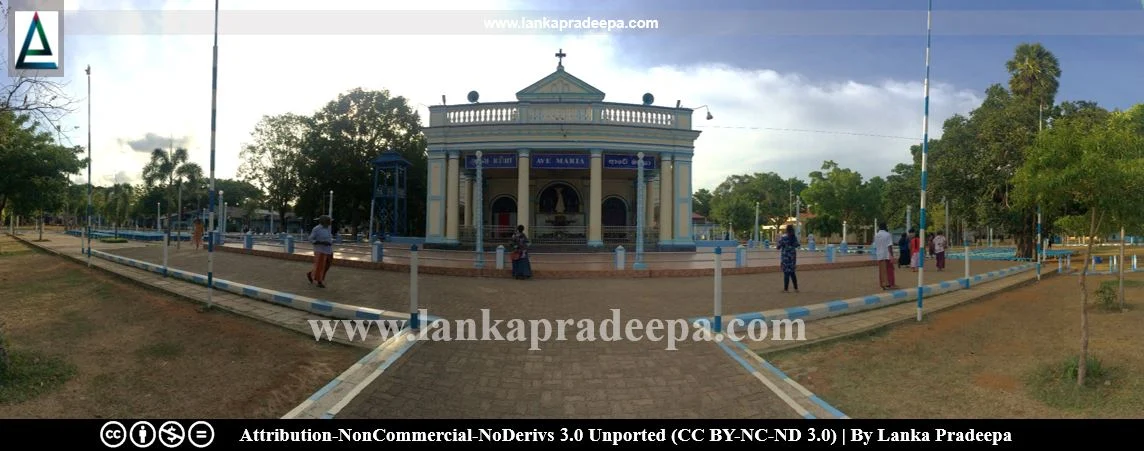
|
Shrine of Our Lady of Madhu |
The Shrine of Our Lady of Madhu (Sinhala: මඩු දේවස්ථානය; Tamil: மடு மரியாள் ஆலயம்) is a Roman Catholic shrine situated in Maradamadu in Mannar District, Sri Lanka. It is considered one of the holiest Catholic shrines in the country (Hyndman, 2003).
History
The locals in Mannar island who converted to Catholicism are said to have fled to the Madhu area in 1544, following the massacre of some 600 Catholics by the Hindu king of Jaffna (Hyndman, 2003). Around 1670, the church built for the Lady of Madhu was standing in Mantai junction but, due to the persecution of the Dutch, the Catholics there left Mantai along with the statue of Lady of Madhu in the church (Asanga & Nishantha, 2018). They also reached the Madhu area and established a small Catholic shrine and began the religious activities (Asanga & Nishantha, 2018).
With the advent of the British, the site gradually became a sacred site of pilgrimage of Catholics. On 8 August 1872, the construction of the new church building was commenced (Asanga & Nishantha, 2018). Thereafter, many development works were carried out at the site by its devotees, finally making it one of the most sacred Catholic shrines in the country.
Sri Lankan Civil War
Madhu was a sanctuary for those displaced from the civil war that staged in Sri Lanka from the 1980s to 2009 (Hyndman, 2003). In November 1999, when the fighting between the LTTE (Liberation Tigers of Tamil Eelam: a rebel group designated as a terrorist organization by a number of countries including Sri Lanka, India, the USA, and the EU) and the government forces in the area heightened, more than 3,500 people sought refuge in Madhu (Hyndman, 2003). However, it became the target of both LTTE and army shelling, which killed more than 35 civilians inside the church grounds (Hyndman, 2003).

|
Shrine of Our Lady of Madhu |
Related Posts
Read Also
References
Books, Government Gazette Notifications, Journal Articles
1) Asanga, M. V. G. K.; Nishantha, I. P. S., 2018. Mannarama Distrikkaya
(In Sinhala). Department of Archaeology (Sri Lanka). ISBN: 978-955-7457-10-9. pp.143-144.
2) Hyndman, J., 2003. Preventive, Palliative, or Punitive? Safe Spaces in Bosnia‐Herzegovina, Somalia, and Sri Lanka. Journal of Refugee Studies, 16(2), pp.167-185.


